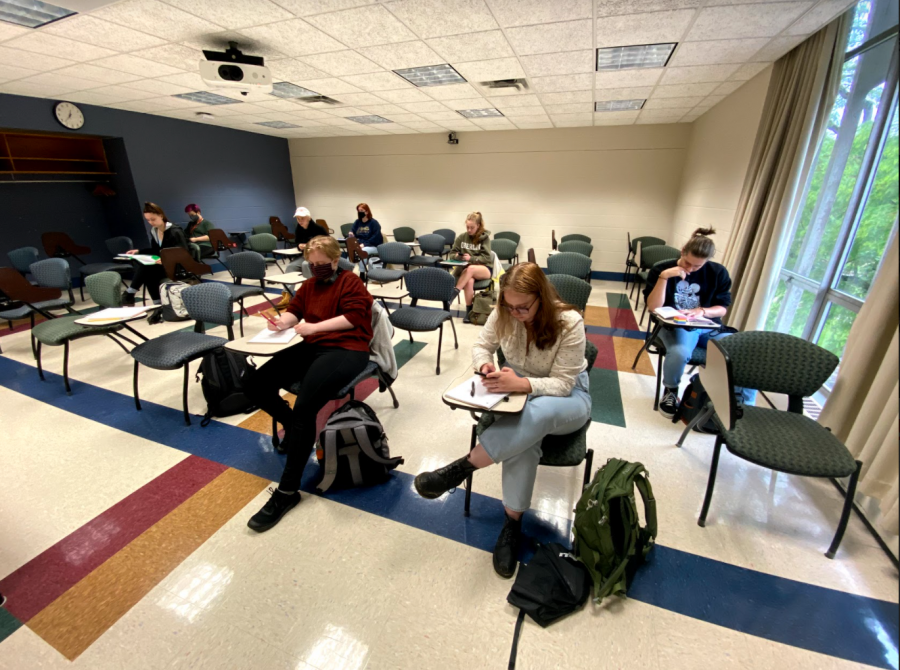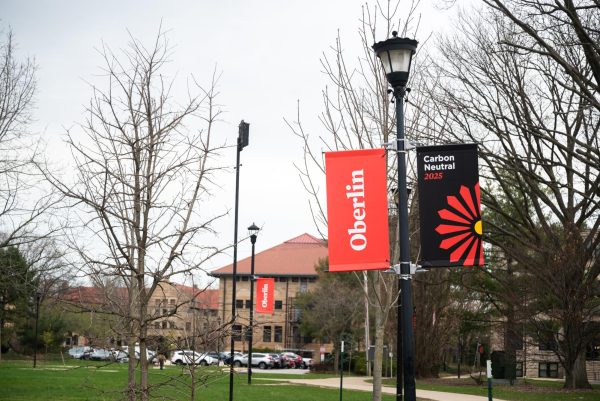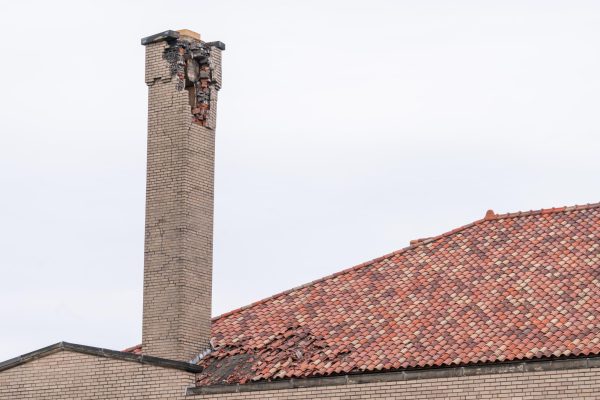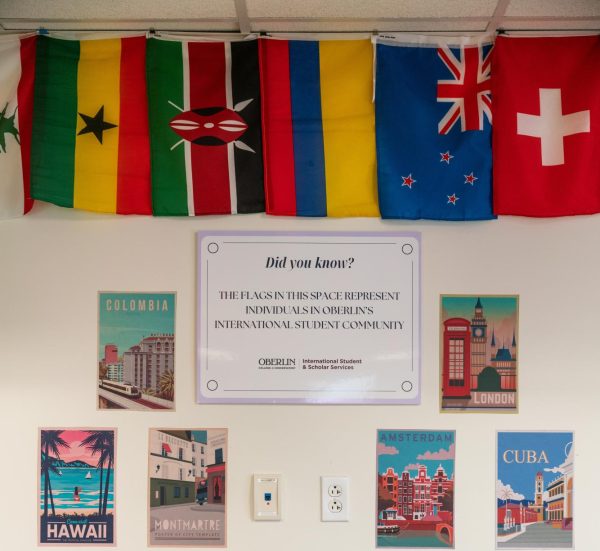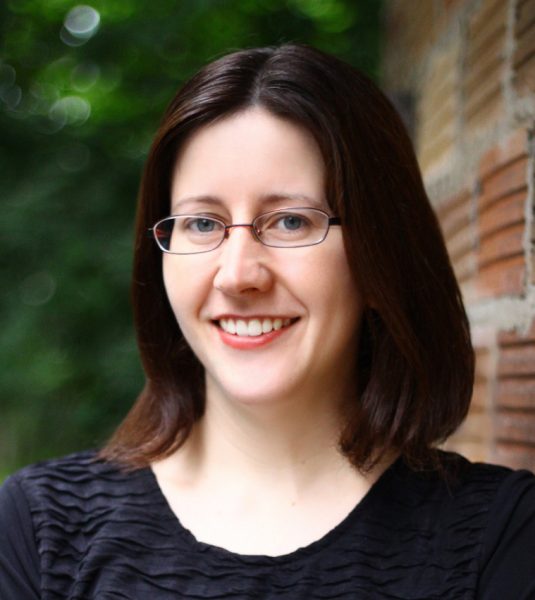Oberlin Admissions, Enrollment Strong Despite COVID-19 Uncertainty
More than 800 predominantly second-year and third-year students are currently attending in-person summer classes on Oberlin’s campus.
The pandemic impacted colleges’ admissions strategies across the country, with more and more college students taking leave and high school seniors opting for a gap year. However, for Oberlin, both enrollment and admissions outcomes look positive; few current students took leave this summer, and the incoming class of 2025 is robust. Because of these and other reasons, Oberlin anticipates coming out of the pandemic with minimal financial harm.
When the College initially announced the three-semester plan last June, Oberlin estimated that it was facing a one-time budget shortfall requiring a significant withdrawal of $31.2 million from the endowment. Now, Vice President for Finance and Administration Rebecca Vazquez-Skillings estimates the shortfall will require $14 million less of a withdraw than originally expected and hopes that Oberlin could see the end of the financial impact of COVID-19 as soon as the 2025 fiscal year.
Positive news, both in terms of the success of the three-semester system and admissions data for the upcoming academic year, has contributed to the positive outlook about the coming years. This is critical because, prior to COVID-19, Oberlin was working to address a structural budget deficit that was estimated to rise to $162 million by 2028 without intervention.
To address this issue, Oberlin developed the One Oberlin recommendations which included making the College’s physical footprint smaller, changing the contract with The Oberlin Student Cooperative Association, and controlling employee costs by outsourcing unionized dining and custodial workers, among other things. Parts of these goals were postponed due to COVID-19, but the administration is hopeful that they can return to implementing them in the next academic year; these include increasing investment in the Career Center, decreasing the class size in the Conservatory, and increasing the class size of the College.
Summer Enrollment
When Oberlin first announced that it would move to a three-semester schedule a year ago, many students, particularly second-years and third-years, were frustrated that they would have to attend classes during the summer. Despite this, most students ultimately decided to follow the College’s plan; the number of students assigned to the summer semester taking a leave of absence is in line with that of the previous two semesters.
“What we ended up at was about where we thought a few weeks ago, we’d end up at, but that’s a little lower than what we had initially thought it would be, but it’s still a workable level of enrollment,” Assistant Vice President for Institutional Research and Planning Ross Peacock said. “I mean the financial impact is negligible if at all, and so far registration for the fall is going like gangbusters. So the fall looks like it’s going to be… a little more normal.”
This summer, 861 Oberlin students are enrolled in classes with 22 of those students enrolled remotely. Although earlier in the spring Oberlin was hoping to welcome around 920 students to campus for the summer, having 59 fewer students was not totally unexpected. Normally, Oberlin has around 40–50 students taking leave during any given semester. During COVID-19 that number has increased three-fold, so the number of students declining to enroll this semester is similar to the previous two semesters.
On May 17, Oberlin announced that it would begin to lift ObieSafe policies that curtailed campus life during the academic year. In response, the Office of the Registrar sent an email to students on leave for the summer offering them a chance to re-enroll now that campus life was returning to normal.
“I think people’s plans were probably pretty well set by then, and they just decided to go ahead and do what they had been planning to do,” Peacock said. “Because what we ended up with — the 861 — was what it looked like it was going to be two or three weeks ago. So I don’t think there was a big change in student planning.”
The majority of students on campus are second-years and third-years but about 35 of them are first-years experiencing their first semester on campus.
“We have approximately 35 students on campus for the summer who have never been enrolled for the residential experience,” said Assistant Dean of Students and Director of Community Life and Standards Thom Julian. “It’s a significant number of students.”
The first-year students who are on campus this summer are students who spent their first semester of college in the fall learning remotely. The College of Arts and Sciences then moved these students from the fall/spring schedule to fall/summer one.
“We very much wanted fall semester remote first-year students to have the opportunity to experience campus in person in their first year,” wrote Associate Dean of the College of the Arts and Sciences Laura Baudot in an email to the Review. “Unfortunately, enrollment projections for spring semester indicated that we would be oversubscribed, given our ObieSafe housing policy. Another factor is that we were optimistic that vaccine availability would mean first-years here for summer term could enjoy a more traditional residential experience their first year of college.”
Overall, Peacock says the College is pleased with the results of the summer semester enrollment. The number of students enrolled keeps the three-semester plan financially viable, and other signs indicate that things are going back to their pre-COVID-19 normalcy.
“The way things look now, it looks like the enrollment will be very similar to a couple of years ago pre-COVID[-19],” Peacock said. “We will come out of it looking pretty good.”
Class of 2025
Because tuition is such an important source of revenue for the College, admissions is one of the most important factors ensuring that Oberlin can financially weather COVID-19. Luckily, the incoming class of 2025 looks strong with all enrollment goals met or exceeded.
At the start of the admissions cycle, Admissions hoped to have an incoming class size of 810 students, but a large number of applicants resulted in the department increasing this goal to 870 students. Even with the more ambitious goal, Oberlin currently has commitments from 920 students for the fall semester.
“218 of the students self-identify as US students of color, representing 27 percent of the class and 9 percent are international,” wrote Vice President and Dean of Admissions and Financial Aid Manuel Carballo in an email to the Review.
Admissions attributes the high numbers to several changes forced by COVID-19. For example, this year, the school went test-optional and also increased the number of remote-accessible events which allowed counselors to interact with more students such as international students who may not be able to travel for a campus visit.
“We were able to interact with over 10,000 visitors over the year in a combination of in-person and virtual settings, an increase over prior years,” wrote Carballo. “That engagement, along with other key changes including test-optional, helped us see a record number of applications this year (9,242). This is the highest total in Oberlin’s history, leading us to expect a solid class joining us in the fall. This year’s total shows a 17 [percent] increase over last year’s record-breaking total of 7,919 and a 48 [percent] increase from the 6,265 applications received two years ago.”
Going test-optional was a policy implemented this year as part of a three-year trial. The move follows several other schools going test-optional during COVID-19 due to its interference with many testing dates last spring.
“For Arts and Sciences, 54.1 percent of applicants and 50.1 percent of enrolling students chose not to submit standardized test scores,” wrote Carballo.
During every summer, Admissions struggles with “summer melt.” This refers to the phenomenon where, throughout the summer, students who committed to Oberlin “melt” away and choose not to attend due to a gap year, because they no longer want to attend, or because they committed to a different school.
To combat melt and increase the number of students committing to Oberlin, the College once again offered for-credit classes for admitted students to give them an idea of what an Oberlin class is like. The class touched on topics relevant to current events and included: Healing Democracy, Cinema and Change: Ritual, Identity, & Coming of Age, Quantitative Toolkit: Patterns and Predictions, and Writing Through Transition.
Through these and other methods, Oberlin has managed to keep summer melt minimal and now expects that there will be more than 900 students enrolling in the fall.
“That would make this incoming class the largest in Oberlin’s history,” wrote Carballo. “These successes in a year of adjustment and uncertainty put us in a great place for recruitment of the Class of 2026 and beyond.”


